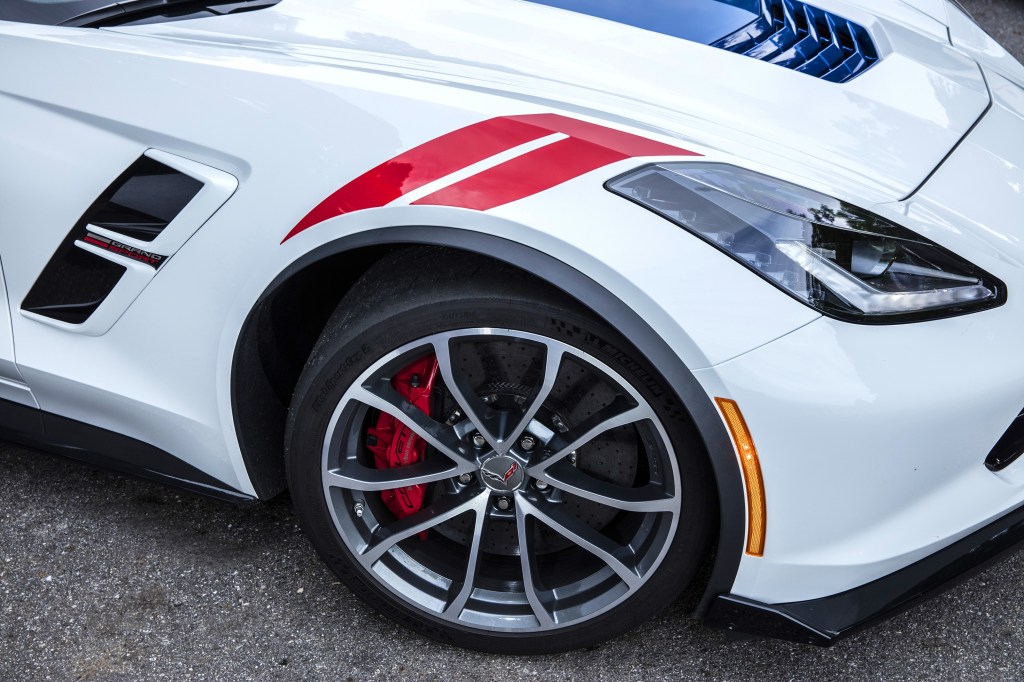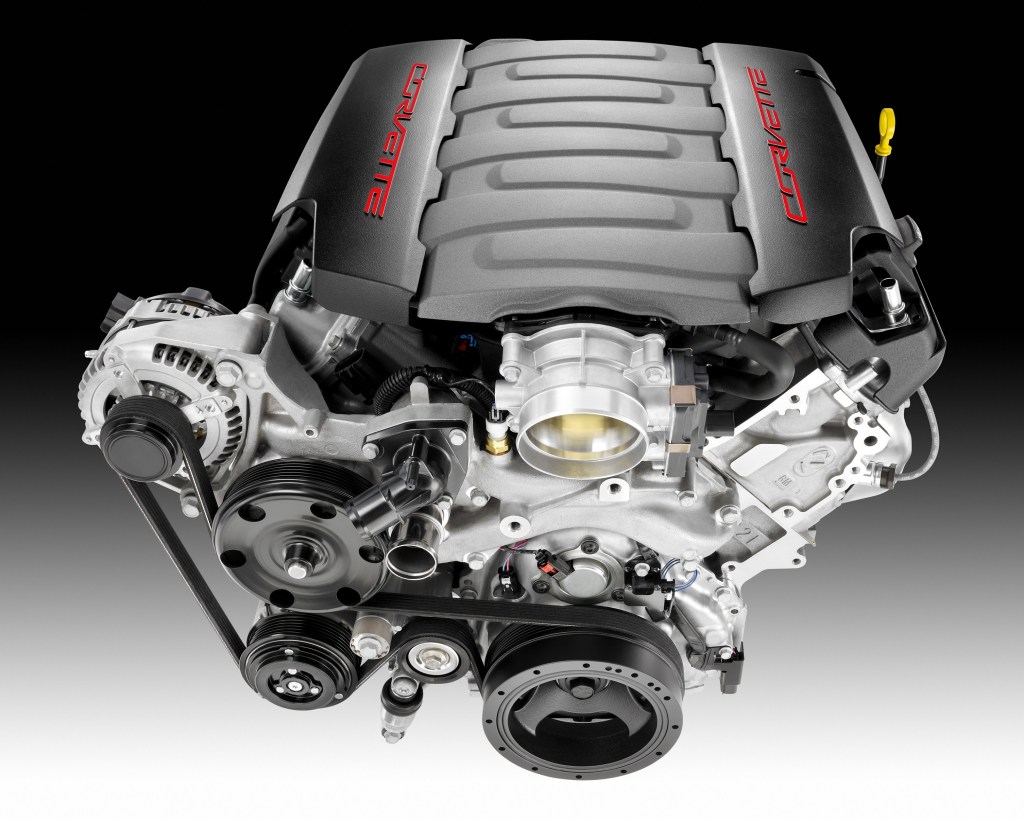
6 Most Common C7 Chevrolet Corvette Problems After 100,000 Miles
Common high-mileage Chevrolet C7 Corvette problems guide highlights:
- Used C7 Corvette Z06s and Grand Sports are known for cracked and warped wheels, while Z06s also have overheating problems
- C7s can also develop touchscreen and automatic transmission problems, but both have relatively simple fixes
- While some interior creaks and rattles are inevitable, you can avoid early C7 LT1 issues by getting a later model that was properly broken in
Time and exposure might dull the sheen of novelty, but the C8 Corvette’s mid-engine status remains special. But that also means, as the last front-engine model, the C7 Corvette is memorable in its own way. And it doesn’t hurt that the C7 isn’t exactly a sports car slouch compared to the C8. Plus, as it’s now a used sports car, cash-strapped enthusiasts are starting to seek it out. Before you do, though, you should know some of the common C7 Corvette problems.
Keep in mind that a secondhand C7 is still a used car when all is said and done. As such, this guide won’t discuss common age-related issues like worn suspension bushings or old gaskets. In addition, unlike the C6 Corvette, the C7 is still new enough that it shouldn’t require new magnetorheological shocks. And though GM issued a software update to improve the ride quality and handling, the shocks aren’t flawed.
Cracked and warped wheels are the most common high-mileage C7 Corvette problems

Now, it’s not unusual for car wheels to suffer curb rash and stains as they roll through life. But C7 Corvettes, especially Z06s and Grand Sports, often have more severe wheel problems. Specifically, that their wheels crack and/or warp, so severely that the cars weren’t safe to drive. The problem was so prevalent that Corvette owners filed two class-action lawsuits over it.
The C7 Corvette’s chief engineer did admit that the Z06’s and Grand Sport’s cast-aluminum wheels could develop fatigue cracks over repeated pothole strikes. But then, that’s also true of virtually any car wheel. And it’s worth noting that the standard C7 Corvette doesn’t suffer from these wheel problems. For example, although Car and Driver’s long-term 2014 C7 was less reliable than its later Grand Sport, it didn’t require three new wheels by the test’s end. Nor did it need seven separate wheel repairs.
Fortunately for used buyers, there are ways of avoiding these C7 Corvette wheel problems. Firstly, don’t buy a Z06 or a Grand Sport. Alternatively, you could install forged aftermarket wheels—they’re more expensive, but they’re typically stronger.
The C7 Corvette Z06 has overheating problems

C7 Corvette Z06s have other problems besides their wheel woes, though. Prolong spirited driving sessions—aka, driving a Z06 as one should—the sports car tends to overheat and go into limp mode. And C7 Z06 owners weren’t the only ones with cars getting hot under their hoods. MotorTrend had multiple Z06 testers overheat under its care. Eventually, the problems led to four class-action lawsuits.
To GM’s credit, it tried addressing these C7 Corvette Z06 overheating problems in several ways. Chevrolet first redesigned the hood and installed a different supercharger cover. When that didn’t quite work, it upgraded the radiators, tweaked the eight-speed automatic transmission, and offered longer warranties. And these changes seemed to work, as 2019 Z06s weren’t included in the warranty-extension program, just 2015-2018 ones.
So, if you want to buy an early-build C7 Z06, make sure it received all the necessary cooling system upgrades. And if you genuinely want to track it, consider investing in supplemental oil and transmission coolers.
A fluid update usually solves C7 Corvette automatic transmission problems
Reports of overheating weren’t the only motivating factors for Chevrolet to update the C7 Corvette’s automatic transmission, though. Although they didn’t overheat, non-Z06 models often suffered from hard and jerky shifts, Corvette Blogger says. Some said their cars would buck and surge in traffic or vibrate severely. And a few were damaged so severely that they needed new transmissions.
But it wasn’t just C7 Corvette owners who had problems. Multiple GM cars, trucks, and SUVs built in the 2015-2019 period with eight-speed automatics have suffered similar issues. And, once more, the owners filed a class-action lawsuit.
Since it became aware of the problems, GM has issued over 60 technical service bulletins related to this transmission. But the most relevant one for C7 Corvette owners is #18NA355.
According to the TSB, the original automatic transmission fluid had moisture content problems. So, mechanics flushed the original fluid, replaced damaged torque converters, and topped the transmissions up with new Mobil 1 synthetic high-performance fluid. Various owner forums claim this solves the shuddering and improves shift quality to boot.
Black infotainment screens might have simple fixes
The C7 Corvette improved on the C6 not just in performance, but in overall refinement, too. Although it’s still not quite on the Porsche 911’s level, the C7’s interior is several steps ahead of the C6’s cabin. Even the standard seats are rather comfortable, Car and Driver notes, and you can dim the gauge cluster and center touchscreen for better night vision.
But while that’s helpful in some circumstances, a completely black touchscreen isn’t helpful at all. Yet that’s what can happen to high-mileage C7s—or even low-mileage ones. MotorTrend’s long-term 2015 Corvette’s center display simply stopped working one day. And even if the screen doesn’t totally fail, flickering displays aren’t uncommon.
MT’s C7 Corvette needed a new display to solve its screen problems. However, in many cases, the culprit isn’t the screen, but the wiring. The infotainment system is linked to an HMI module mounted behind the driver’s side kick panel. Over time, some of its cables can work themselves loose, disabling the audio and infotainment. Just plug the wires back in and the screen should be fixed.
Furthermore, GM issued a TSB, #PI1149A, that describes other possible culprits for C7 Corvette screen problems. If it’s not the HMI module wiring, it could be a broken ECU connector. So, if your C7’s screen is a bit wonky, you might not need a new one.
Also, Chevrolet updated the HMI module after the 2015 model year. 2016-2019 cars reportedly have better-connected cables. That doesn’t mean they still can’t have infotainment problems, but it seems to eliminate a possible culprit.
If you have an early-build C7, make sure the first owner broke the LT1 in properly

For those going C7 Corvette shopping, avoid the first few model years. The 2015 and 2016 Corvette are particularly troublesome, especially when it comes to engine and powertrain problems. Some of these issues, such as overheating, are Z06-specific. And we’ve already covered the automatic transmission flaws. However, there’s one more worth noting: blown engines.
Although Car and Driver’s long-term C7 didn’t suffer broken wheels, its 6.2-liter LT1 V8 blew 6000 miles into the 40,000-mile test due to a connecting-rod bearing failure. And this wasn’t an isolated incident. Several other early-build C7 owners had their LT1 V8s blow before their warranties expired. But these problems weren’t necessarily GM’s fault—nor are they inescapable.
True, Car and Driver says GM had some problems removing inner machining burrs from early-build LT1s. However, its oil filter supplier had similar quality-control issues, too. Due to machining errors, the filters could fragment and shred the V8’s internal components.
Furthermore, not every owner followed the recommended break-in schedule. Although the C7 Corvette has a 7500-mile oil change interval, the dry-sump V8 requires an oil change after the first 500 miles of driving. It’s because the gaskets’ silicone sealants can make the oil foam up, causing leaks and preventing proper lubrication and cleaning.
The good news is later C7 Corvettes’ LT1 V8s don’t have these machining problems. But whenever possible, make sure the car you’re eyeing was broken in properly.
After 100,000 miles, your C7 Corvette will likely have some interior problems

Finally, one of the most common high-mileage C7 problems is interior rattles. Admittedly, many worn used cars have some scattered squeaks and rattles. However, the C7 was prone to these problems even when it was new. MT and Car and Driver both experienced creaking interiors and rattly Targa tops on their early-model long-term test cars. And while the late-model C7s seem to have better-built interiors, they’re not immune to the creaks and squeaks.
Still, some interior clatter isn’t the end of the world. And unlike the other problems described here, panel creaks rarely if ever cause mechanical issues.
Follow more updates from MotorBiscuit on our Facebook page.


